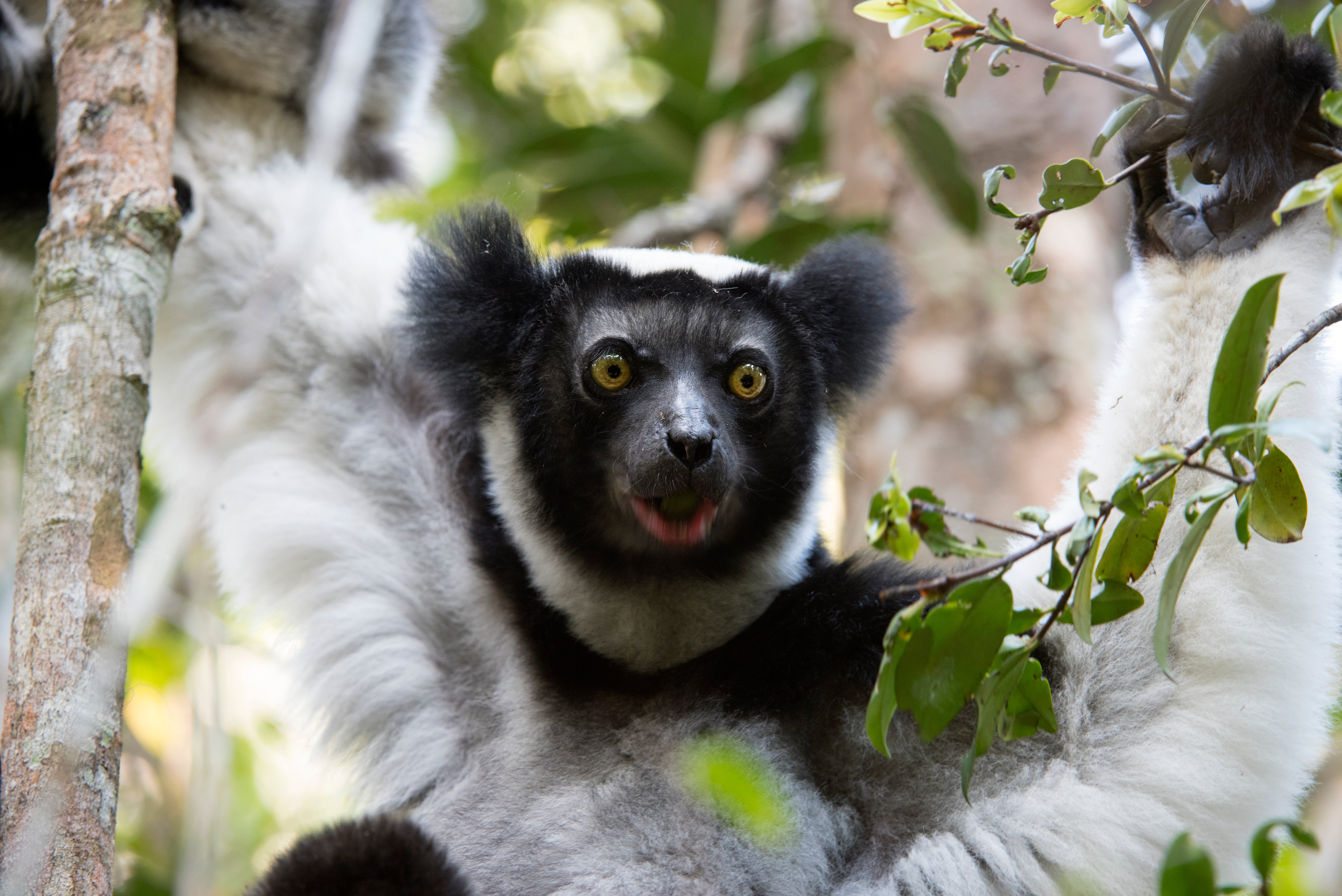Singing lemurs have rhythm just like humans, study finds
Critically endangered Indri indri sing harmonised duets and choruses together as family group

Your support helps us to tell the story
From reproductive rights to climate change to Big Tech, The Independent is on the ground when the story is developing. Whether it's investigating the financials of Elon Musk's pro-Trump PAC or producing our latest documentary, 'The A Word', which shines a light on the American women fighting for reproductive rights, we know how important it is to parse out the facts from the messaging.
At such a critical moment in US history, we need reporters on the ground. Your donation allows us to keep sending journalists to speak to both sides of the story.
The Independent is trusted by Americans across the entire political spectrum. And unlike many other quality news outlets, we choose not to lock Americans out of our reporting and analysis with paywalls. We believe quality journalism should be available to everyone, paid for by those who can afford it.
Your support makes all the difference.You might have heard a primate howl but have you heard one sing?
The majority of species that make up the animal world might not be known for their beautiful warbles and trills – bar, of course, birds – but researchers in Madagascar have discovered it is not just humans and avian species which possess an intrinsic musical quality: some primates do, too.
Specifically, lemurs boast a trait that is rare in non-human mammals – rhythm.
A 12-year study of the primates living in rainforest on the Indian Ocean island revealed that the harmonised duets and choruses of the critically endangered Indri indri – which to the human ear sound much like high-pitched squeaks, or unflatteringly, air seeping out of a balloon – included the same rhythms found in human song.
Listening to members of the lemur’s family group singing together, as they do in the wild, researchers found the primates had categorical rhythm – that is, intervals between sounds with exactly the same duration (either 1:1 or doubled duration 1:2).
“There is longstanding interest in understanding how human musicality evolved, but musicality is not restricted to humans,” said Andrea Ravignani, of the Dutch Max Planck Institute for Psycholinguistics, one of the international research team’s senior investigators.
“Looking for musical features in other species allows us to build an ‘evolutionary tree’ of musical traits, and understand how rhythm capacities originated and evolved in humans.”
Black and white-coated Indri indri, also called the babakoto, are one of the largest living lemurs – and one of the few singing primates.
Over more than a decade, the team, co-led by Marco Gamba from the University of Turin, studied the musical abilities of the primates, recording songs from 39 animals living in 20 different groups.
They found that indri songs had the classic rhythmic categories (1:1 and 1:2) as well as the ritardando, which is a gradual slowing down within a piece of music.
Male and female songs had a different tempo but showed the same rhythmic characteristics.
The team said their ability to communicate with familiar rhythms may have evolved independently from our own singing ability, as the last common ancestor between humans and indri lived 77.5 million years ago.
Rhythm, the researchers suggested, may make it easier for the lemurs to learn, produce and process songs.
Ms Ravignani said her team would next turn their attention to other elements of the lemurs’ – and other species’ – songs.
“We would like to look for evidence of others, including an underlying ‘repetitive’ beat and a hierarchical organisation of beats – in indri and other species,” she said.
Join our commenting forum
Join thought-provoking conversations, follow other Independent readers and see their replies
Comments